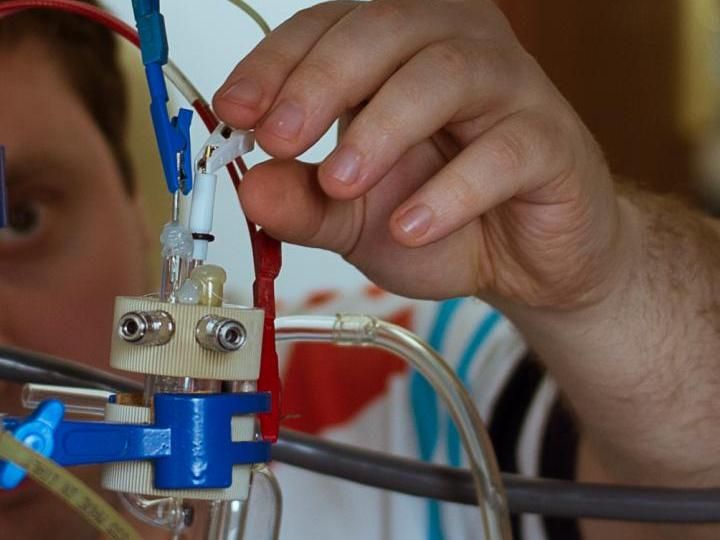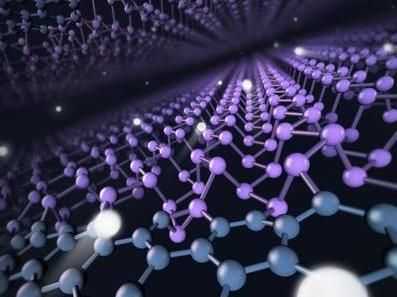How the electrodes of lithium-air batteries become passivated
Lithium-air batteries are devices, producing power just out of air so they are also called lithium-oxygen batteries. Due to higher energy density they are much lighter than lithium-ion ones. Lithium-air batteries could prove to be much-needed, for instance, for increasing driving range of electric cars on a single charge. However, despite all these advantages, industrial production of lithium-air batteries hasn't started yet since their designers face fundamental problems which can't be overcome for the present.

This is an electrochemical cell for the studies of mechanisms of processes, taking place in lithium-air batteries.
Alexei Khokhlov
Artem Sergeev, a Ph.D. student from the Department of Polymer and Crystal Physics at the Solid-state Physics Division of the Faculty of Physics of the Lomonosov Moscow State University, and one the co-authors shares: "A lithium-air battery could potentially have specific energy, which is 3-5 times more than modern lithium-ion batteries. One of the main problems in such batteries' development is electrode passivation, which is transition of the electrode material surface into inactive state. We've obtained new data, concerning the reaction mechanism, and suggested some ideas on how to inhibit electrode passivation. One could use the technique, offered by us, for searching for more appropriate solvents, electrolytes and electrode materials."
Pure oxygen but not air, being a mixture of atmospheric gases, is necessary today for operation of lithium-air batteries. Carbon dioxide and moisture, contained in air, slow down redox reactions, underlying the battery operation. By various estimates, overcoming these obstacles will take from 5 to 10 years. The scientists from the Lomonosov Moscow State University study the processes, preventing robust operation of lithium-air batteries.
Alexei Khokhlov, Doctor of Physical and Mathematical Sciences, Academician of RAS, the Head of the Department of Polymer and Crystal Physics at the Faculty of Physics of the Lomonosov Moscow State University and one of the article authors comments: "Generally, in the case of elaboration success the battery should be lithium-air, implying usage of environmental air. Special membranes should separate its undesirable components (moisture, carbon dioxide). But currently there are also more fundamental problems and in order to solve them one usually applies to lithium-oxygen cells, where pure oxygen from gas bottles is delivered."
The cathode (a positive electrode) in a lithium-air battery is represented by a porous carbon sponge, containing in its voids the electrolyte solution with lithium ions. The cathode contacts with the outside gas environment, what is necessary to provide oxygen delivery to the electrolyte, which is a liquid ion conductor. The scientists have simulated the interface between the electrode and electrolyte solution at the cathode of a lithium-air battery and offered an approach for inhibiting electrode passivation. The researchers have used the supercomputer complex of the Lomonosov Moscow State University for all-atom simulation with the help of molecular dynamics methods.
Alexei Khokhlov explains: "There is quite a number of parallel processes and reactions, occurring at the cathode while lithium-air battery operates. Unfortunately, experimental study of separate stages of these processes often turns out to be impossible, while simulation of separate stages of the reactions with the help of supercomputers allows to trace basic trend in the stages of interest."
The scientists have found out that reduction of superoxide anion (a strong inorganic oxidizer - O2- ), leading to electrode passivation, is possible only after its binding with lithium cation.
Alexei Khokhlov sums up: "We've understood that formation of non-conductive discharge products right on the electrode surface (its passivation) takes place only after binding of an intermediate (superoxide anion) with lithium ions, which concentration is high near the electrode surface. If you displace them out, passivation won't, probably, proceed so rapidly."
The project has been done in cooperation with scientists from Ulm University, Germany.
Original publication
Other news from the department science
These products might interest you
Most read news
More news from our other portals
See the theme worlds for related content
Topic World Battery Technology
The topic world Battery Technology combines relevant knowledge in a unique way. Here you will find everything about suppliers and their products, webinars, white papers, catalogs and brochures.

Topic World Battery Technology
The topic world Battery Technology combines relevant knowledge in a unique way. Here you will find everything about suppliers and their products, webinars, white papers, catalogs and brochures.





























































